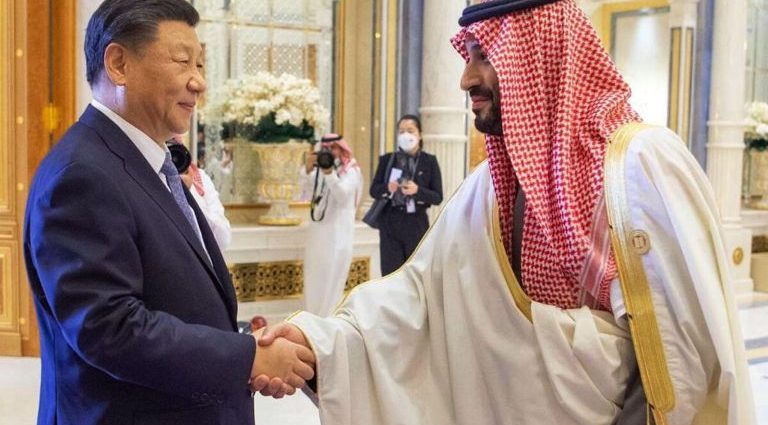
The warm welcome for Chinese President Xi Jinping to Saudi Arabia in December was interpreted by many as a sign of Chinese resurgence in the Middle East and a growing crisis in US-Saudi relations.
China has become increasingly active in the Middle East both economically and politically over the past decade. Its approach to the region ranges from actively expanding its reach and influence to warily avoiding the region’s chronic instability.
At the same time, Western, and especially US, perceptions have shifted from viewing China as a benign “free-rider” on the security infrastructure provided by the United States to a growing consensus that China now constitutes a threat to Western interests in the Middle East.
As tensions rise in the South China Sea and the Taiwan Strait, and political and economic fissures widen between China and the West, Beijing is likely to become even more active in a Middle East that has become more welcoming. Even as China’s footprint in the region increases, it will continue to calculate each step with the likely US response in mind.
China’s engagement in the region grew substantially after the announcement of its Belt and Road Initiative in 2013, in which the Middle East plays a significant part. Originally focused on trade and investment in the energy sector, the BRI has since been diversified. It now plays an active role in numerous infrastructure projects, smart cities, innovation centers, and fifth-generation (5G) mobile networks.
Since 2016, China has been the region’s largest foreign investor.
Frustrated by US policies in the Middle East, regional leaders, for their part, have started to view Beijing as a more reliable partner as their distrust of Washington mounts. For Gulf Cooperation Council (GCC) countries, the relationship with China is more strategic than opportunistic. China’s ability to provide both infrastructure and technology fits well with the visions that Gulf leaders are pursuing for their future.
China’s Digital Silk Road, introduced in 2015, has become a substantial part of its engagement in the region. Saudi Arabia, Egypt and the United Arab Emirates have expanded technological cooperation with China in recent years.
With US-China competition over technology intensifying, Chinese technology companies like Huawei are facing significant pushback among countries in the West and are therefore deepening their cooperation in the Middle East.
The shifting equation in the region was clearly demonstrated when the UAE suspended talks on its F-35 fighter-jet deal with the US in 2021, promised as a reward for signing the Abraham Accords. The decision was made after a US demand that the UAE give up cooperation with Huawei on its 5G network as a condition for the deal moving forward.
The importance of the Chinese president’s visit to Riyadh in December was in the fact that, unlike previous ones, it was strategic for both sides.
For China, the biggest question remains whether current US global strategy, including Washington’s policy toward China, will lead to US resurgence or a gradual withdrawal from the region.
For Saudi Arabia, the UAE and the other GCC countries, China in many ways fits well with their vision for the future. More than any other player, China is fully equipped to serve as a long-term partner, buying their oil, building their smart cities and helping them diversify their economies to green energy.
But rather than choosing sides, Saudi Arabia and the UAE are inclined to favor a strategy of multiple partners including the US, China and others.
As the US works to preserve its leadership role and Europe remains preoccupied with the war in Ukraine and other challenges, China will continue to strengthen its position in the Middle East, including its ties with long-standing US allies.
Many countries in the region view China as an important partner that is there to stay. When countries in the Gulf region envisage their future, they see China more than the United States.
China will likely become more active but is expected to remain cautious as it assesses the implications for its regional and global interests of recent developments in the Middle East. The US might well be changing its strategic approach in the Middle East, but it will remain a dominant regional player in the coming years.
New regional groupings, such as the I2U2 comprising India, Israel, the UAE and the US, provide Washington with an opportunity to play a positive role and reshape its regional position.
The US should work to alleviate concerns among its partners in the Middle East that any pivot to Asia will come at their expense by supporting such partnerships. Another idea could be to expand the Indo-Pacific Economic Framework (IPEF) to include the UAE as well as other Arab Gulf countries and Israel.
By moving away from the zero-sum game of superpower competition in the Middle East, the US can advance a broader agenda that would be welcomed by its allies in the region and bring Asia and the Middle East closer together.
This article was provided by Syndication Bureau, which holds copyright.

